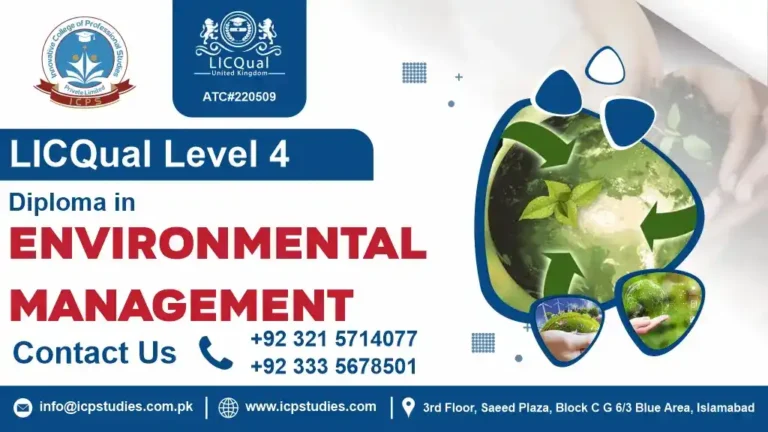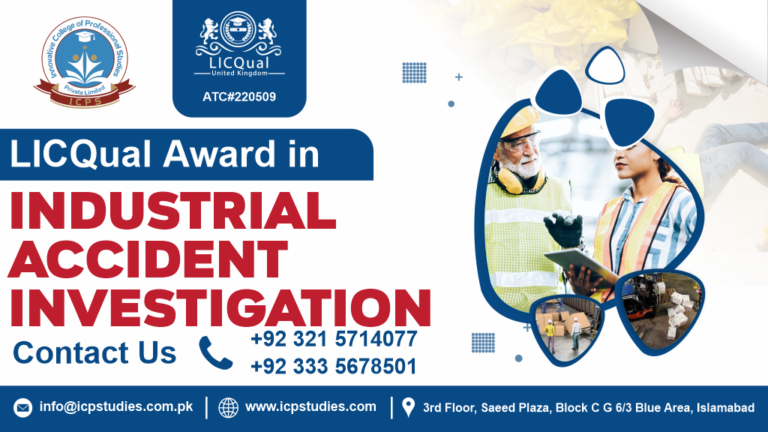In the realm of food safety, vigilance is key. Ensuring that the food we consume is free from contaminants is not only a matter of health but also a fundamental right for consumers. Heavy metals, such as lead, cadmium, mercury, and arsenic, pose significant risks to human health when present in food at elevated levels. To combat this threat, a specialized certification program has emerged: the Certificate in HACCP Heavy Metal Hazards. Let’s delve into what this certification entails and why it’s crucial in today’s food industry landscape.
The Certificate in HACCP Heavy Metal Hazards is designed to equip food industry professionals with the knowledge and skills to effectively identify, assess, and control heavy metal contamination risks in food production and processing. This certification program goes beyond traditional food safety measures to address a specific and pressing concern within the industry.
Certificate in HACCP Heavy Metal Hazards emerges as a beacon of assurance for consumers and industry stakeholders alike. By equipping professionals with the knowledge and tools to combat heavy metal contamination in food, this certification program plays a pivotal role in safeguarding public health and upholding the integrity of the food supply chain. As the food industry continues to evolve, embracing specialized certifications like HACCP Heavy Metal Hazards becomes imperative to stay ahead of emerging threats and ensure a safer, healthier future for all.
All About Certificate in HACCP Heavy Metal Hazards
Course Overview
A Certificate in HACCP Food Delivery and Storage is a specialized credential that signifies proficiency in applying Hazard Analysis Critical Control Point (HACCP) principles to the processes involved in food delivery and storage. This certification is designed for individuals and businesses involved in the food industry to ensure that they maintain the highest standards of food safety throughout the supply chain.
A Certificate in HACCP Food Delivery and Storage is an invaluable asset for anyone involved in the food industry. It equips professionals with the knowledge and tools needed to ensure that food remains safe and high-quality from the point of storage to the consumer’s doorstep. By implementing HACCP principles, businesses can not only comply with regulatory requirements but also foster consumer trust and improve overall operational efficiency.
Study Units
- Introduction to HACCP and Food Safety Management Systems
- Heavy Metal Contaminants in Food: Sources and Health Implications
- HACCP Principles and Hazard Identification for Heavy Metal Hazards
- Risk Assessment and Control Measures for Heavy Metal Contamination
- Developing and Implementing HACCP Plans for Heavy Metal Hazards
- Monitoring, Verification, and Documentation of HACCP Systems
Admission Criteria
Introduction to HACCP and Food Safety Management Systems
Learning Outcomes:
- Understand the basic concepts and significance of HACCP in food safety management.
- Describe the evolution and regulatory framework of HACCP systems.
- Identify the components and functions of a comprehensive food safety management system.
- Explain the roles and responsibilities of different stakeholders in maintaining food safety.
2. Heavy Metal Contaminants in Food: Sources and Health Implications
Learning Outcomes:
- Identify common heavy metal contaminants found in food, such as lead, cadmium, mercury, and arsenic.
- Understand the natural and anthropogenic sources of heavy metal contamination in the food supply.
- Assess the health implications of heavy metal exposure, including acute and chronic health effects.
- Discuss the pathways through which heavy metals enter the food chain and the population groups most at risk.
3. HACCP Principles and Hazard Identification for Heavy Metal Hazards
Learning Outcomes:
- Explain the seven principles of HACCP and their application to heavy metal hazards.
- Conduct a thorough hazard analysis to identify potential heavy metal contaminants in food production.
- Develop a comprehensive list of critical control points (CCPs) specific to heavy metal hazards.
- Understand the importance of establishing critical limits and corrective actions for CCPs related to heavy metal contamination.
4. Risk Assessment and Control Measures for Heavy Metal Contamination
Learning Outcomes:
- Perform risk assessments to evaluate the likelihood and severity of heavy metal contamination in food products.
- Identify and implement effective control measures to reduce or eliminate heavy metal risks in food production and processing.
- Develop strategies for sourcing raw materials and ingredients that minimize the risk of heavy metal contamination.
- Understand the role of environmental monitoring and testing in controlling heavy metal hazards.
5. Developing and Implementing HACCP Plans for Heavy Metal Hazards
Learning Outcomes:
- Create a HACCP plan that specifically addresses heavy metal hazards in food production.
- Incorporate critical control points, monitoring procedures, and corrective actions into the HACCP plan.
- Understand the documentation and record-keeping requirements necessary for an effective HACCP plan.
- Implement and integrate the HACCP plan into existing food safety management systems within an organization.
6. Monitoring, Verification, and Documentation of HACCP Systems
Learning Outcomes:
- Develop monitoring procedures to ensure that critical control points for heavy metal hazards are under control.
- Understand the processes and importance of verifying the effectiveness of HACCP systems.
- Establish a robust documentation system for recording monitoring results, corrective actions, and verification activities.
- Analyze and interpret data from HACCP monitoring and verification to drive continuous improvement in food safety practices.
These learning outcomes provide a comprehensive framework for professionals seeking to enhance their expertise in managing heavy metal hazards in the food industry through the application of HACCP principles. By mastering these study units, participants will be well-equipped to ensure the safety and quality of food products, protecting public health and maintaining regulatory compliance.
Ideal Candidat
Educational Background
- Minimum Education Level: High school diploma or equivalent.
- Preferred Education: Post-secondary education in food science, environmental science, chemistry, nutrition, public health, or a related field is advantageous but not mandatory.
2. Professional Experience
- Work Experience:
- Some experience in the food industry, such as roles in food production, quality assurance, food safety, environmental health, or regulatory compliance, is beneficial.
- Entry-level professionals are welcome, particularly if they have a keen interest in food safety and hazard management.
3. Skills and Competencies
- Basic Food Safety Knowledge: A foundational understanding of food safety principles and practices is recommended.
- Attention to Detail: Strong attention to detail is crucial for identifying and managing heavy metal hazards in food production.
- Analytical Skills: Ability to analyze processes, identify potential risks, and develop control measures.
- Communication Skills: Proficiency in written and verbal communication to effectively document procedures and collaborate with team members.
4. Technical Requirements
- Computer Literacy: Basic computer skills, including proficiency with word processing, spreadsheets, and online learning platforms.
- Internet Access: Reliable access to the internet for accessing course materials, submitting assignments, and communicating with instructors and peers.
5. Language Proficiency
- Language Requirements: Proficiency in the language of instruction (usually English). For non-native speakers, a standardized test score (such as TOEFL or IELTS) may be required to demonstrate language proficiency.
6. Personal Attributes
- Commitment to Learning: A willingness to engage with course materials and complete assignments on time.
- Problem-Solving Mindset: Ability to approach challenges with a problem-solving attitude and a proactive mindset.
- Team Player: Willingness to work collaboratively with others in a food safety environment.
7. Additional Requirements (if applicable)
- Prerequisite Courses: Some programs may require the completion of introductory courses in food safety or related topics before enrolling in the HACCP Heavy Metal Hazards certification course.
- Interview or Assessment: An interview or preliminary assessment may be conducted to gauge the candidate’s suitability for the course.
By meeting these entry requirements, candidates will be well-prepared to embark on their journey toward obtaining a Certificate in HACCP Heavy Metal Hazards, equipping them with the essential skills and knowledge to ensure food safety and quality in their professional roles.
Learning Outcomes
Food Safety Managers and Coordinators
- Role: Overseeing food safety programs within food production and processing facilities.
- Benefit: Enhanced ability to identify and manage heavy metal hazards, ensuring comprehensive food safety practices.
2. Quality Assurance and Control Personnel
- Role: Implementing and maintaining quality control measures to meet food safety standards.
- Benefit: Improved skills in monitoring, testing, and verifying heavy metal contamination, leading to better quality assurance processes.
3. Food Processing Plant Managers
- Role: Managing daily operations in food manufacturing and processing plants.
- Benefit: Knowledge of HACCP principles specific to heavy metal hazards, helping to prevent contamination and ensure safe production practices.
4. Regulatory Agency Inspectors
- Role: Inspecting food production facilities to ensure compliance with food safety regulations.
- Benefit: Deeper understanding of heavy metal hazards and HACCP principles, aiding in more effective inspections and enforcement of regulations.
5. Environmental Health Officers
- Role: Monitoring and controlling environmental factors that impact public health, including food safety.
- Benefit: Expertise in identifying sources of heavy metal contamination and implementing measures to protect public health.
6. Researchers and Scientists in Food Safety
- Role: Conducting research on food safety issues, including contaminants and foodborne illnesses.
- Benefit: Specialized knowledge in heavy metal contamination, contributing to more informed research and innovative solutions in food safety.
7. Food Industry Consultants
- Role: Providing expert advice to food businesses on safety practices and regulatory compliance.
- Benefit: Ability to offer specialized guidance on managing heavy metal hazards, enhancing the value of consulting services.
8. Entrepreneurs and Small Business Owners
- Role: Running food-related businesses such as food trucks, catering services, or small-scale production facilities.
- Benefit: Understanding of heavy metal hazards and HACCP principles to ensure the safety and quality of their products, protecting their brand and customers.
9. Career Changers and Aspiring Professionals
- Role: Individuals looking to enter or transition into the food safety industry.
- Benefit: Gaining essential skills and certification that enhance employability and career prospects in the food industry.
10. Educational Institutions and Trainers
- Role: Educators and trainers providing food safety education and training programs.
- Benefit: Updated curriculum and training materials that include heavy metal hazards, offering comprehensive education to students and trainees.
This course is ideal for anyone involved in food production, processing, quality assurance, regulatory inspection, and food safety research. By obtaining this certification, professionals can significantly enhance their capability to manage heavy metal hazards, ensuring safer food products and compliance with regulatory standards. Whether you are an experienced food safety professional or new to the industry, the Certificate in HACCP Heavy Metal Hazards provides valuable knowledge and skills to advance your career and contribute to public health.
FAQs about Certificate in HACCP Heavy Metal Hazards







